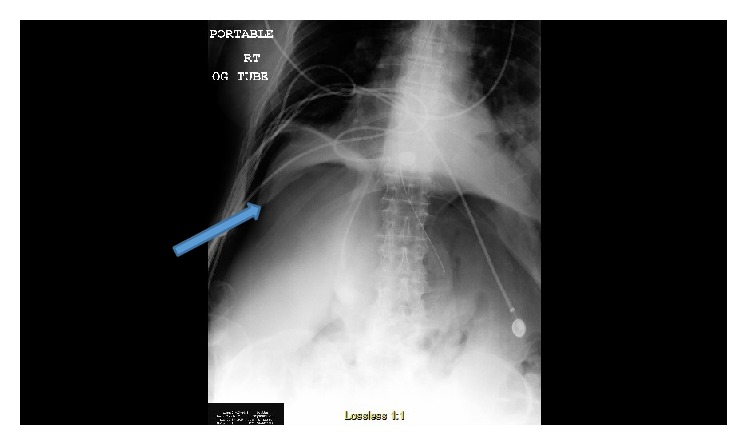Playlist
Show Playlist
Hide Playlist
Emphysema: Introduction
-
Slides ObstructiveLungDisease Emphysema RespiratoryPathology.pdf
-
Download Lecture Overview
00:01 Now that we’ve looked at the overview, of obstructive lung disease and the different overlaps of asthma, chronic bronchitis and emphysema, we dive into the particulars of emphysema. Now, what you must focus upon would be the definition that we are seeing here and the fact that it does technically come under COPD, which if you were to take a look at those overlapping diagnosis of circles that I showed you, then this would be the green shaded area. 00:29 So, what is emphysema? Defined by abnormal, permanent enlargement of the airspace in distal to the terminal bronchioles. So, where are you? You’re getting closer to your alveoli. You’re thinking about your alveolar ducts and you’re thinking about the alveoli. 00:48 That is accompanied by destruction of the airspace walls without obvious fibrosis and that’s a big point. Because if fibrosis was to take place then you wouldn’t be referring to obstructive lung disease, would you? No. You would then be referring to restrictive lung disease. 01:05 Now, before we move on, think about the anatomy of your respiratory tree. Distal to the terminal bronchioles, you are thinking about the respiratory bronchioles, you are thinking about the alveolar duct and alveoli and those structures are supported by parenchyma. 01:21 There are septae that are involved, keep that in mind, as we go through various steps of emphysema and there will be a little bit of a difference between the damage that’s taking place to the ducts versus the damage that will be taking place permanently to the alveoli. 01:35 Let us begin. 01:37 So, to begin with, I want you to take a look at the cartoon and where we are. On the very left, move down the divisions and generations of your trachea through the bronchi, through the bronchiole, eventually through the terminal bronchioles of entry into the respiratory and, on or in the middle you have your normal bronchiole and alveoli. The reason you can say that is because the septae there are dividing each alveoli, kind of looks like, well, a cluster of grapes, doesn’t it? Whereas if there is emphysema, just as a theme here, it’s a fact that there is a destruction that’s taking place of the parenchyma. So, you can only imagine here that you are losing your surface area. If you lose your surface area, this means that you do not have effective gas exchange. And hence, your DLCO, your diffusion capacity of carbon monoxide, in fact, is decreased. It’s not because of decreased compliance, in fact, in emphysema, what happens to your compliance, do you remember? It increases, but it doesn’t mean that your lungs are more effective as being a breathing apparatus, it’s a fact that now you lost your surface area. Now, this is in general. 02:50 Obviously, there’s a lot more detail to go into.
About the Lecture
The lecture Emphysema: Introduction by Carlo Raj, MD is from the course Obstructive Lung Disease.
Included Quiz Questions
Which of the following provides the correct definition of emphysema?
- Permanent enlargement of the airspace distal to the terminal bronchioles
- Temporary enlargement of the airspace distal to the terminal bronchioles
- Permanent enlargement of the airspace proximal to the terminal bronchioles
- Permanent enlargement of the airspace distal to the bronchi
- Temporary enlargement of the airspace proximal to the terminal bronchioles
What is the reason for the decrease in the diffusion capacity of the lungs for carbon monoxide?
- The decreased surface area due to alveolar septal destruction leads to a decrease in the diffusion of carbon monoxide.
- There is decreased compliance leading to a lesser diffusion of carbon monoxide.
- There is increased obstruction leading to a lesser diffusion of carbon monoxide.
- There is decreased air entry leading to a lesser diffusion of carbon monoxide.
- There is decreased fibrosis leading to decreased diffusion of carbon monoxide.
Which of the following is true about emphysema?
- Emphysema is characterized by abnormal and permanent enlargement of the airspace distal to the terminal bronchiole.
- The primary feature of emphysema is fibrosis.
- Airspace walls are usually not affected in emphysema.
- Emphysema is characterized by a reversible enlargement of the airspace.
- DLCO is unchanged in emphysema.
Customer reviews
5,0 of 5 stars
| 5 Stars |
|
5 |
| 4 Stars |
|
0 |
| 3 Stars |
|
0 |
| 2 Stars |
|
0 |
| 1 Star |
|
0 |




